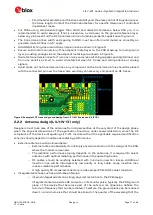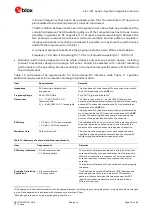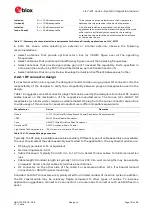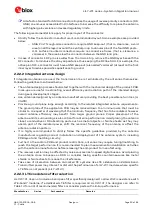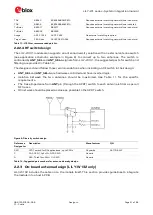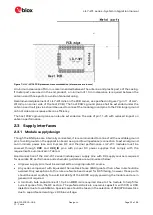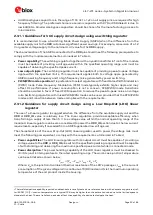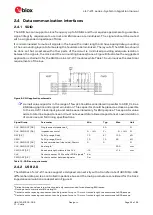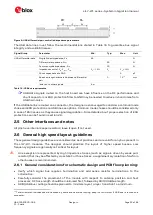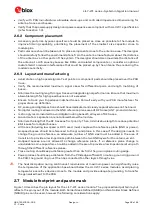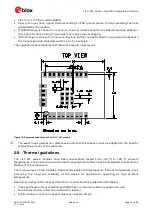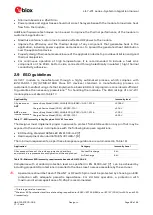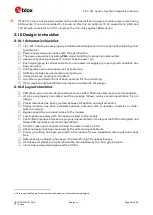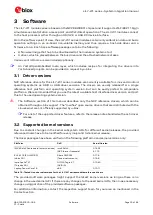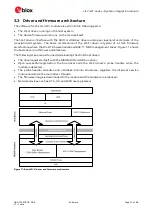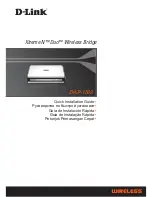
LILY-W1 series - System integration manual
UBX-15027600 - R09
Design-in
Page 16 of 64
C1 - Public
Therefore, module integrators must either follow exactly one of the antenna reference design used
in the module’s FCC type approval and detailed in Annex B or certify their own designs.
2.2.1
RF transmission line design (LILY-W131 only)
RF transmission lines such as the one from the
ANT
pin up to the related antenna connectors must
be designed so that the characteristic impedance is as close as possible to 50
Ω
. Figure 4 illustrates
the design options and the main parameters to be taken into account when implementing a
transmission line on a PCB:
•
The micro strip (a track coupled to a single ground plane, separated by dielectric material),
•
The coplanar micro strip (a track coupled to ground plane and side conductors, separated by
dielectric material).
•
The strip line (a track sandwiched between two parallel ground planes, separated by dielectric
material).
The coplanar micro strip is the most common configuration for a printed circuit board (PCB).
Figure 4: Transmission line trace design
To properly design a 50
Ω
transmission line, the following remarks should be taken into account:
•
The designer should provide enough clearance from surrounding traces and ground in the same
layer; in general a trace to ground clearance of at least two times the trace width should be
considered and the transmission line should be ”guarded” by ground plane area on each side.
•
The characteristic impedance can be calculated as first iteration using tools provided by the layout
software. It is advisable to ask the PCB manufacturer to provide the final values that are usually
calculated using dedicated software and available stack-ups from production. It could also be
possible to request an impedance coupon on panel’s side to measure the real impedance of the
traces.
•
FR-4 dielectric material, although its high losses at high frequencies can be considered in RF
designs providing that :
o
RF trace length must be minimized to reduce dielectric losses.
o
If traces longer than few centimeters are needed, it is recommended to use a coaxial
connector and cable to reduce losses.
o
Stack-up should allow for wide 50
Ω
traces and at least 200 µm trace width is
recommended to assure good impedance control over the PCB manufacturing process.
















